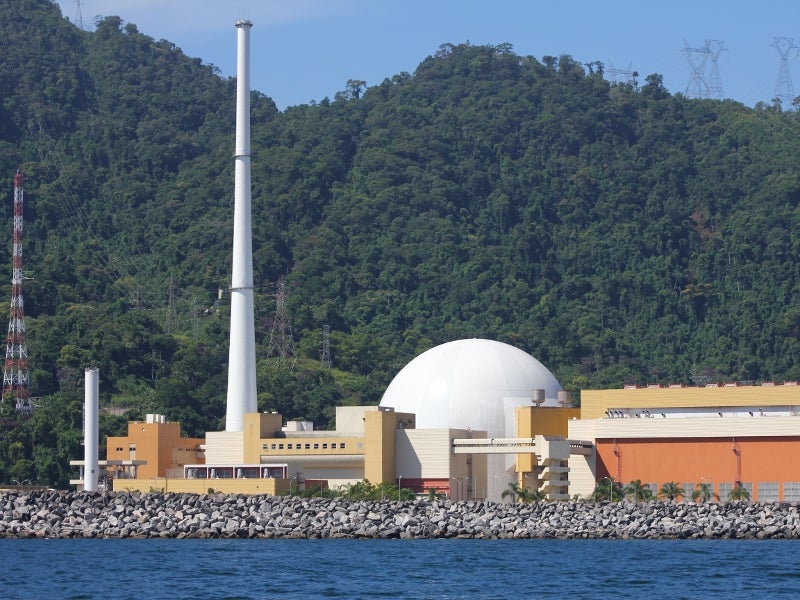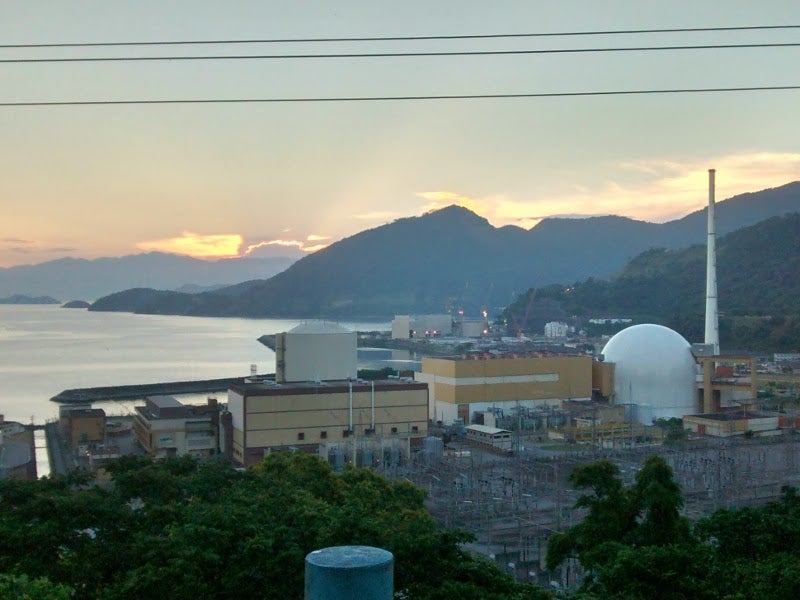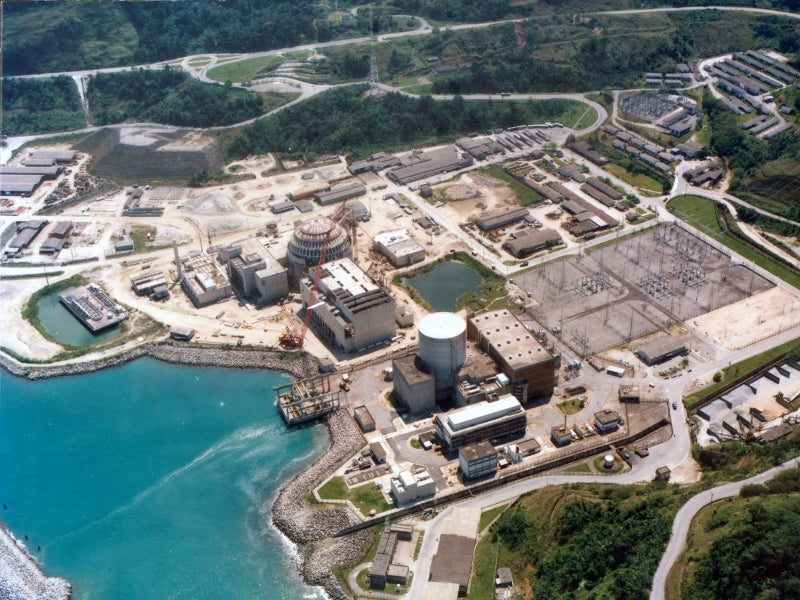Angra nuclear power plant (NPP) is the only nuclear-powered electricity generation facility in Brazil.
It currently has two pressurised water reactors, Angra 1 and Angra 2, with a total net capacity of 1,884MW, which accounts for about 3% of the country’s electricity. Angra 1 is rated at 609MW, while the net output of Angra 2 is 1,275MW.
A third pressurised water reactor Angra 3 with a net capacity of 1,245MW is being constructed to expand the capacity of Angra nuclear power plant.
The Angra NPP is operated by Eletronuclear, a subsidiary of Electrobras, a major electricity generation and transmission company in Brazil.
Angra nuclear power plant timeline
The proposal to develop the project was finalised through international bids in 1970.
The construction works at the site were started in 1972 and the Angra 1 unit began commercial operations in 1985.
Construction on the Angra 2 unit was first initiated in 1981 but was stopped in 1986 due to economic crisis. The construction was resumed in 1994 and the commissioning of Angra-2 took place in 2001.
Excavation work on the Angra 3 project had first begun in 1976 but was halted in 1986 due to economical issues. The National Nuclear Energy Commission granted a license for the construction of the Angra 3 in May 2010 and the construction was commenced in the following month.
The National Bank for Economic and Social Development (BNDES) approved R$14.9bn ($2.5bn) of financing for the Angra 3 project in January 2011. The construction was again halted in 2014 due to irregularities in the contracts that were awarded in the same year.
In June 2020, the Investment Partnerships Program (PPI) Council of Brazil approved a plan to complete the Angra 3 project. The investment is now projected to reach R$17bn ($3.2bn).
Nearly two-thirds of civil works for the Angra 3 project have been completed to date and Eletronuclear is seeking a project partner to complete the project.
Angra nuclear power plant location
The Angra nuclear power plant is located near the Brazilian municipality of Angra dos Reis, the southern part of Rio de Janeiro.
The plant is close to the coast of the South Atlantic Ocean and is well connected with Rod. Gov. Mario Covas.
Angra 1 details
Angra 1 NPP reactor supplies energy to the cities of Porto Alegre or São Luís that has a population of approximately one million.
It is installed with WH 2LP pressurised water reactor (PWR). The gross capacity of the plant is 640MW, while the thermal capacity is 1,882MW.
The total electricity supplied via the unit amounted to 105.48TWh until 2019 at an energy availability factor of 62.4% and an operation factor of 69.4%.
The unit was initially equipped with an emergency diesel generator of 2,850kW, 4,063kVA, which was later replaced with KHD / Siemens generator of 5,400kW, 6,600kVA.
Angra 2
The second unit of the plant is installed with the Pre Konvoi PWR. It operates with a gross capacity of 1,350MW and a thermal capacity of 3,764MW.
The Angra 2 unit supplies electricity to close to two million inhabitants of cities that is mainly comprised of Belo Horizonte.
A total of 182.93TWh of electricity was supplied at an energy availability factor of 87.4% and an operation factor of 89.3% from the plant unit by 2019.
The plant is equipped with four KHD / Siemens emergency diesel generator units each with a nominal power of 5,400kW, 6,600kVA. It also features four KHD / Siemens generator units each with a capacity of 860kW, 1,050kVA.
Details of Angra 3
Spread across an area of 82,000m², the Angra 3 unit will also be installed with Pre Konvoi PWR.
The unit will have a thermal capacity of 3,900MW and a gross capacity of 1,405MW. The design net capacity of the reactor will be 1,340MW.
When operational, Angra 3 will generate more than 12 million MWh per annum, which is enough to supply Brasília and Belo Horizonte cities.
Contractors involved in Angra nuclear power plant
Westinghouse Electric Corporation supplied the reactor for the Angra 1 power plant. The reactor supply contracts for the Angra 2 and Angra 3 were awarded to Kraftwerk Union (KWU), a subsidiary of Siemens.
ÅF Switzerland was awarded the contract for 3D modelling of the piping, ventilation and electrical engineering design, technical support services, and the as-built design for the nuclear island buildings of ANGRA 3 NPP.
The project is being managed by ÅF Finland and a significant number of local sub-contractors have been assigned for the project in association with ÅF.





